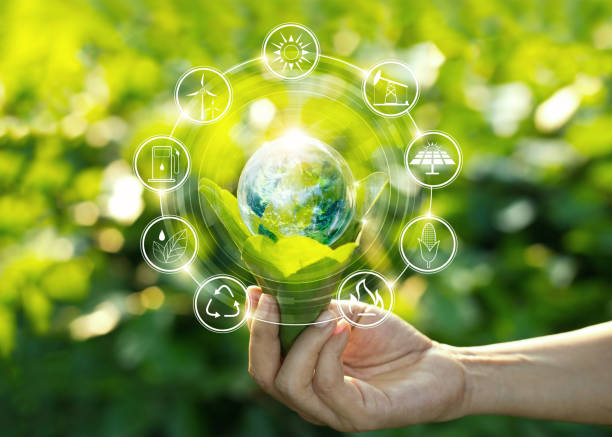Green Magic Homes Blend Nature and Modern Living
Embracing eco-friendly architecture, Green Magic Homes and modern home designs pave the way for sustainable living by merging nature with energy-efficient systems. Utilizing renewable energy, water conservation, and innovative materials, these homes offer a harmonious balance between comfort and environmental stewardship. Understanding these designs provides insight into advancing global sustainability efforts.

What Makes Green Magic Homes an Eco-Friendly Revolution?
Green Magic Homes pioneered a unique construction method using prefabricated fiber-reinforced polymer (FRP) modules that can be assembled quickly and covered with earth or vegetation. This innovative approach creates structures that are virtually invisible from above and blend harmoniously with their surroundings. The modular design allows for extensive customization while maintaining structural integrity and environmental benefits. These homes resist extreme weather conditions, including earthquakes, hurricanes, and fires, making them both sustainable and resilient housing solutions.
The revolutionary aspect extends beyond construction materials to include the integration of sustainable systems throughout the home. Solar panel compatibility, rainwater harvesting capabilities, and natural ventilation systems are seamlessly incorporated into the design. The earth-covered roofs provide natural insulation while creating opportunities for rooftop gardens or restored natural habitats, effectively increasing the property’s green space rather than reducing it.
How Do Eco-Friendly Modern Home Designs Function?
Contemporary eco-friendly home designs prioritize functionality while minimizing environmental impact through thoughtful planning and innovative materials. Open floor plans maximize natural light penetration, reducing the need for artificial lighting during daylight hours. Large windows strategically positioned to capture prevailing breezes facilitate natural ventilation, decreasing reliance on mechanical cooling systems.
Modern sustainable homes incorporate recycled and renewable materials wherever possible, from bamboo flooring to reclaimed wood fixtures. Smart home technology integration allows residents to monitor and optimize energy consumption in real-time. Low-impact landscaping using native plants reduces water requirements and maintenance needs while supporting local ecosystems. These design elements work together to create living spaces that are both environmentally responsible and aesthetically pleasing.
What Energy Efficiency and Insulation Features Stand Out?
The earth-sheltered design of Green Magic Homes provides superior insulation properties compared to traditional above-ground construction. The thermal mass of soil covering these structures moderates interior temperatures naturally, reducing heating and cooling demands throughout the year. The FRP construction material offers excellent insulation properties while remaining lightweight and durable.
Advanced insulation techniques include continuous insulation barriers that eliminate thermal bridging, spray foam insulation in cavity spaces, and reflective barriers that reduce radiant heat transfer. High-performance windows with low-E coatings and multi-pane construction minimize heat loss while maximizing natural light. Sealed construction techniques prevent air leakage, ensuring that conditioned air remains inside while preventing moisture infiltration that could compromise indoor air quality.
How Are These Homes Harnessing Renewable Energy?
Renewable energy integration is fundamental to sustainable home design, with solar photovoltaic systems being the most common implementation. The unique roof design of earth-sheltered homes provides excellent opportunities for solar panel installation, as the panels can be positioned at optimal angles regardless of the home’s orientation. Ground-source heat pumps utilize the earth’s consistent underground temperature to provide efficient heating and cooling.
Wind energy systems, while less common in residential applications, can be incorporated where local conditions are favorable. Battery storage systems store excess renewable energy for use during peak demand periods or when renewable sources are unavailable. Smart energy management systems automatically prioritize renewable energy use while seamlessly switching to grid power when necessary, optimizing both energy efficiency and cost savings.
What Water Conservation Strategies Are Implemented?
Comprehensive water conservation begins with rainwater harvesting systems that collect precipitation from rooftops and direct it to storage tanks for landscape irrigation and non-potable uses. Greywater recycling systems process water from sinks, showers, and washing machines for reuse in toilet flushing and irrigation applications.
Low-flow fixtures throughout the home reduce water consumption without compromising functionality. Drought-resistant landscaping using native plant species minimizes irrigation requirements while supporting local wildlife. Permeable paving materials allow rainwater to infiltrate naturally rather than creating runoff that could contribute to erosion or flooding. Smart irrigation controllers adjust watering schedules based on weather conditions and soil moisture levels, ensuring plants receive adequate water while avoiding waste.
| Provider | Home Type | Cost Estimation |
|---|---|---|
| Green Magic Homes | Earth-sheltered modular | $35,000 - $75,000 |
| Earthship Biotecture | Self-sufficient earthship | $150,000 - $400,000 |
| Living Homes | Prefab sustainable | $200,000 - $500,000 |
| Unity Homes | Net-zero ready modular | $180,000 - $350,000 |
Prices, rates, or cost estimates mentioned in this article are based on the latest available information but may change over time. Independent research is advised before making financial decisions.
The future of residential construction increasingly points toward sustainable solutions that work in harmony with natural systems rather than against them. Green Magic Homes and similar eco-friendly housing options demonstrate that environmental responsibility and modern comfort are not mutually exclusive. As technology continues advancing and environmental awareness grows, these innovative housing solutions are becoming more accessible and practical for homeowners seeking to reduce their ecological footprint while enjoying contemporary living standards. The integration of renewable energy systems, water conservation measures, and energy-efficient design creates homes that not only minimize environmental impact but often generate more resources than they consume.




